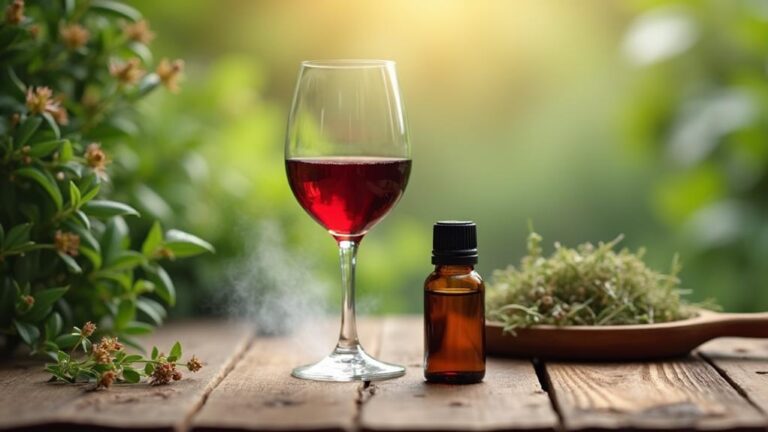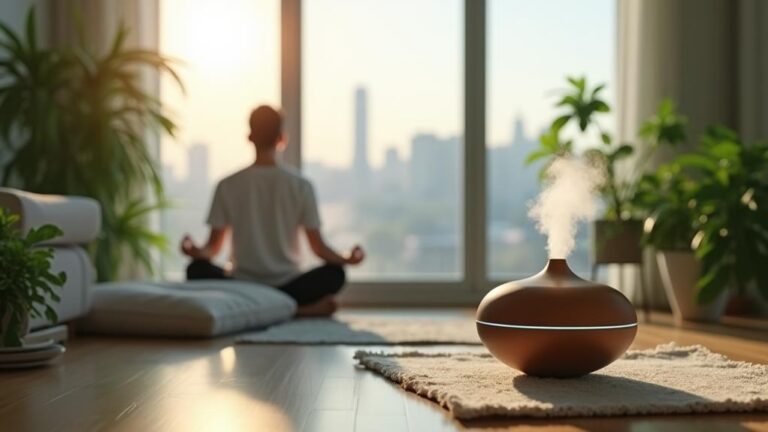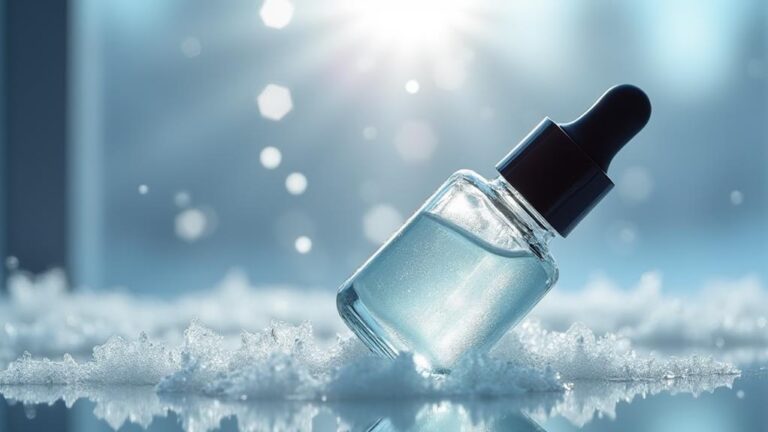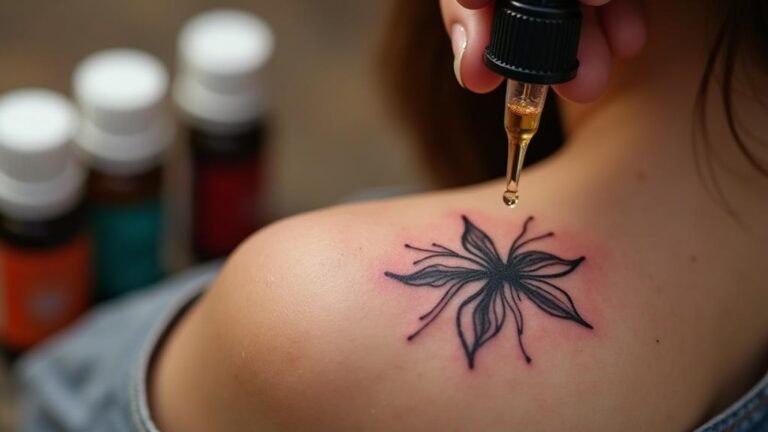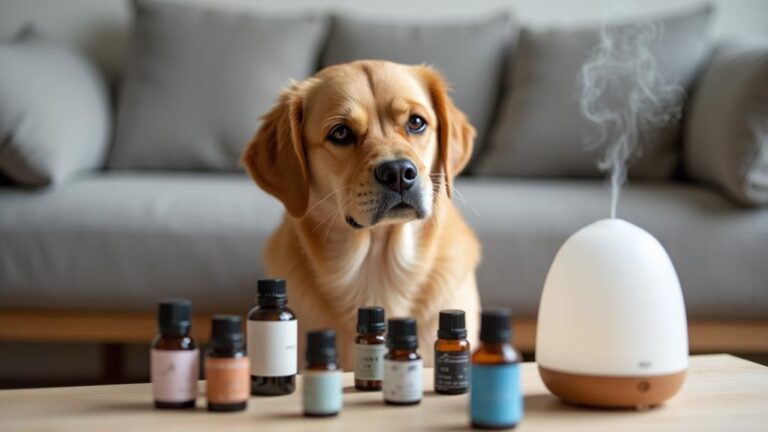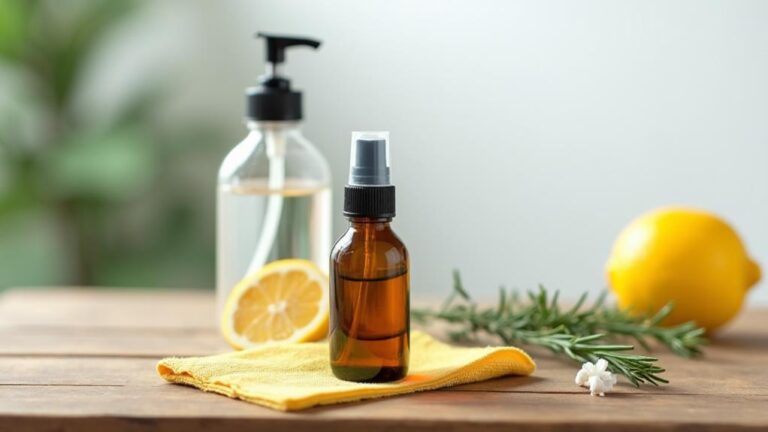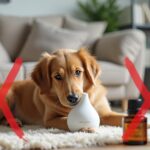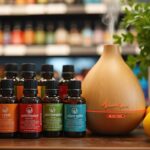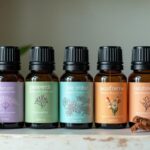You're probably aware of the benefits of using essential oils in hair care, but have you considered creating your own essential oils hair grease at home? By doing so, you'll be able to customize the ingredients to address your specific hair concerns, such as dryness, dandruff, or frizz. To get started, you'll need to gather the right ingredients, but that's just the beginning. The real challenge lies in combining these ingredients in the right proportions and ensuring their stability and shelf life. Can you achieve a perfect blend that nourishes your hair without breaking the bank?
Key Takeaways
- Select carrier oils rich in nutrients and fatty acids, such as coconut oil, olive oil, and jojoba oil, for moisturizing and nourishment.
- Blend carrier oils to create a tailored mix, considering hair type and oil characteristics, like absorption rates and textures.
- Add essential oils, like lavender or tea tree oil, at 1-3% of the total recipe volume, for therapeutic benefits and to address specific hair care concerns.
- Use natural preservatives, such as grapefruit seed extract or vitamin E oil, to extend shelf life and promote healthy hair and scalp.
- Blend ingredients thoroughly using techniques like double boiler method, hand mixer, or whisk, to ensure a uniform and effective hair grease mixture.
Gather Essential Ingredients
Gathering essential ingredients is the first step in creating your own essential oils hair grease.
When it comes to hair care, selecting the right oils is vital for achieving desired results.
You'll need a combination of carrier oils and essential oils to create a well-rounded hair grease.
For carrier oils, focus on those rich in nutrients and fatty acids, such as coconut oil, olive oil, and jojoba oil.
These oils help moisturize and nourish your hair, while also providing a base for the essential oils.
When choosing carrier oils, consider your hair type and the benefits you want to achieve.
For example, coconut oil is great for dry or damaged hair, while jojoba oil is suitable for oily hair.
Essential oils, on the other hand, provide the therapeutic benefits of your hair grease.
Look for oils with properties that address your specific hair care concerns, such as lavender oil for dandruff or rosemary oil for hair growth.
Always choose high-quality, pure essential oils that are safe for use on the skin and hair.
With the right combination of carrier and essential oils, you'll be able to create a hair grease that effectively addresses your hair care needs.
Mix Carrier Oils Together
When you mix carrier oils together, you're creating a blend that's tailored to your hair's specific needs.
Choosing the right base oils is vital, as different oils offer distinct benefits, such as moisturizing, nourishing, or protecting your hair.
Choosing Base Oils
As you begin formulating your essential oils hair grease, selecting the right base oils is crucial for achieving the desired benefits and texture.
You'll need to choose from various oil types that cater to specific hair concerns, such as dryness, dandruff, or frizz. Carrier oils like coconut, olive, and jojoba are popular choices due to their moisturizing and nourishing properties.
Consider your hair type when selecting the base oils.
If you have dry or damaged hair, look for oils rich in antioxidants and fatty acids, such as argan, avocado, or grapeseed.
For oily hair, opt for lightweight oils like sweet almond, apricot kernel, or sunflower seed.
If you have combination hair, you can mix and match different oil types to achieve a balance between nourishment and control.
When choosing base oils, also consider their absorption rates, viscosity, and shelf life.
Oils with high absorption rates, such as coconut or jojoba, can penetrate the hair shaft quickly, while thicker oils like olive or avocado may provide a longer-lasting moisturizing effect.
Blending Techniques
To create a well-rounded essential oils hair grease, you'll want to blend multiple carrier oils together, leveraging their unique properties to achieve a synergistic effect.
When mixing carrier oils, consider their individual characteristics, such as viscosity, absorption rates, and nutritional content.
For example, coconut oil and olive oil have distinct fatty acid profiles that can complement each other when blended. Coconut oil's saturated fatty acids provide moisturizing and protective benefits, while olive oil's polyunsaturated fatty acids promote nourishment and growth.
When blending carrier oils, think about scent combinations and how they'll interact with the essential profiles you plan to use.
Some carrier oils, like jojoba oil, have a mild, neutral scent, while others, like argan oil, have a distinct nutty aroma.
Consider how these scents will complement or clash with the essential oils you'll be adding to your hair grease.
A harmonious blend of carrier oils will create a balanced base for your essential oils hair grease.
By carefully selecting and blending your carrier oils, you'll be able to create a customized hair care product that meets your specific needs.
[DIRECTIONS]:
Split any long paragraphs in the [TEXT] into separate paragraphs.
[DIRECTIONS]:
Oil Ratios Matter
The ratio importance lies in the unique characteristics of each carrier oil.
For example, coconut oil is solid at room temperature, while olive oil is liquid. Combining these oils in the right ratio will result in a product that's neither too solid nor too liquid.
A general rule of thumb is to use a higher percentage of a lighter oil, such as jojoba or sweet almond oil, and a smaller percentage of a heavier oil, like coconut or shea butter oil.
Experiment with different oil combinations and ratios to find the perfect blend for your hair type.
Keep in mind that oil ratios can be adjusted based on your hair's specific needs, such as moisturizing, nourishing, or protecting.
Add Essential Oils Blend
Within your Essential Oils Hair Grease recipe, incorporating a blend of essential oils can substantially enhance its benefits.
Essential scents play a vital role in the efficacy of your hair grease, as different oil profiles interact synergistically to promote healthy hair and scalp.
When selecting essential oils, consider their unique properties and how they complement one another.
For example, tea tree oil has antimicrobial properties, while lavender oil is known for its calming effects. Combining these oils can create a powerful blend that not only nourishes the hair but also soothes the scalp.
To create an effective essential oil blend, start by determining the total amount of essential oils you want to add to your hair grease recipe.
A general rule of thumb is to use 1-3% of the total recipe volume.
Once you have this amount, you can select the individual essential oils and their corresponding ratios.
Be sure to research the specific oil profiles and their potential interactions to guarantee a harmonious blend that promotes peak hair and scalp health.
Create Natural Preservative
You've carefully crafted your Essential Oils Hair Grease recipe and selected a complementary blend of essential oils to promote healthy hair and scalp.
Now, the time has come to ponder a preservative to extend the shelf life of your product. You can create a natural preservative using natural additives and plant extracts that are gentle on the hair and scalp.
To create a natural preservative, you can use the following ingredients:
- Grapefruit Seed Extract: This extract has antimicrobial properties that help to prevent the growth of bacteria and mold in your product.
- Vitamin E Oil: This oil has antioxidant properties that help to protect your product from oxidation and spoilage.
- Rosemary Extract: This extract has antimicrobial and antioxidant properties that help to preserve your product and promote healthy hair growth.
- Tea Tree Oil: This oil has antimicrobial properties that help to prevent the growth of bacteria and mold in your product.
When creating a natural preservative, verifying you use the right proportions of each ingredient is crucial to safeguard that your product is effectively preserved.
Research the recommended usage rates for each ingredient to guarantee you're using them safely and effectively.
Blend Ingredients Thoroughly
When combining your essential oils with the natural preservative and other ingredients, you'll want to employ a mixing technique that guarantees thorough incorporation of all components.
You should combine the ingredients with care to prevent separation, settling, or aeration, which can compromise the stability and effectiveness of your hair grease.
Mixing Technique Matters
Blending ingredients thoroughly is crucial in creating effective essential oils hair grease.
When you combine different ingredients, it can be challenging to achieve a uniform mixture. However, using the right homogenization methods and blending strategies can make all the difference.
Some techniques to guarantee proper mixing:
- Double Boiler Method: Heat the mixture in a double boiler, stirring frequently, to guarantee that all ingredients melt and combine evenly.
- Hand Mixer or Whisk: Use a hand mixer or whisk to blend the ingredients until they're smooth and well combined.
- Thermomix or Blender: Utilize a thermomix or blender to mix and heat the ingredients simultaneously, guaranteeing a uniform temperature and texture.
- Stirring and Cooling: Stir the mixture thoroughly, then let it cool before re-stirring to guarantee that all ingredients are fully incorporated.
When blending essential oils hair grease ingredients, remember that the order in which you add ingredients can affect the final product's texture and consistency.
Combine With Care
When combining the ingredients, take safety precautions seriously.
Wear protective gloves and work in a well-ventilated area to avoid inhaling any harsh fumes.
Start by adding the carrier oils to the mixing bowl, followed by the essential oils.
Use a gentle folding motion to blend the ingredients, being careful not to create air pockets or splashes.
As you mix, pay close attention to the texture and consistency of the blend, adjusting the ingredient ratios as needed.
Fill and Label Containers
Into their designated containers, carefully pour the prepared essential oils hair grease mixture, taking care not to overfill or spill any of the contents.
This step is vital in maintaining the cleanliness and consistency of the final product.
When selecting container options, consider the following:
- Dark-tinted glass jars: These protect the essential oils from UV light, preserving their potency and effectiveness.
- Tin containers: These are a great option for their eco-friendliness and ability to prevent light exposure.
- Plastic containers: Although not ideal, BPA-free plastic containers can be used as a last resort, but guarantee they're airtight and leak-proof.
- Mini containers: Consider using smaller containers for easier travel and application.
Moving on to label design, guarantee that each label includes the following information:
product name, ingredients, usage instructions, and any relevant warnings or cautions.
A clear and concise label design will help you and others safely use the essential oils hair grease.
Test and Store Grease
Your newly filled and labeled containers of essential oils hair grease are now ready to undergo testing and storage.
To verify the product's quality and stability, perform a stability test by storing a sample at room temperature and in the refrigerator for several weeks.
Observe the grease's texture, appearance, and scent for any changes. This test will help you assess its shelf life and potential degradation.
After confirming the grease stability, focus on container safety.
Certify the containers are airtight and made of a material that won't react with the grease, such as glass or BPA-free plastic.
Store them in a cool, dry place, away from direct sunlight and heat sources.
If you plan to use the grease on a regular basis, consider keeping a small container in the bathroom, while storing the rest in a separate area.
When storing multiple containers, label and organize them to maintain easy access and visibility.
This will help you monitor the containers' condition and guarantee they remain safe and effective for use.
Frequently Asked Questions
Can I Use Hair Grease on Colored or Chemically Treated Hair?
When using hair grease on colored or chemically treated hair, you're likely wondering if it's safe. Look for a color-safe, gentle formula that acts as a hair protectant, locking in moisture and minimizing damage.
How Often Should I Apply Hair Grease for Best Results?
You'll want to apply hair grease based on your hair growth rate and product absorption. Typically, daily or every other day is ideal, as this allows for maximum moisturizing without clogging your pores.
Can I Customize the Scent With Different Essential Oils?
You can experiment with different essential oils to customize the scent, blending unique combinations to create distinct fragrance profiles, such as lavender and peppermint for a revitalizing scent or rose and chamomile for a calming aroma.
Is Homemade Hair Grease Suitable for All Hair Types?
While commercial products often claim universality, homemade hair grease isn't always suitable for all hair types. You'll find it works best for low-porosity hair, but may weigh down high-porosity hair or exacerbate fragile textures.
Can I Sell Homemade Hair Grease Without Certifications?
You'll likely need business permits and compliance with regulations to sell homemade hair grease. Research local laws on cosmetics sales, labeling, and safety standards to certify your product meets legal requirements for commercial distribution.
Conclusion
By following these 7 steps, you'll have a customized essential oils hair grease to tackle your unique hair concerns. According to the National Hair Loss Association, over 80 million people in the US suffer from hair loss. Creating your own essential oils hair grease can be a game-changer. With the right blend of carrier and essential oils, you can promote healthy hair growth and improve its overall appearance. Store your grease properly to maintain its effectiveness.



